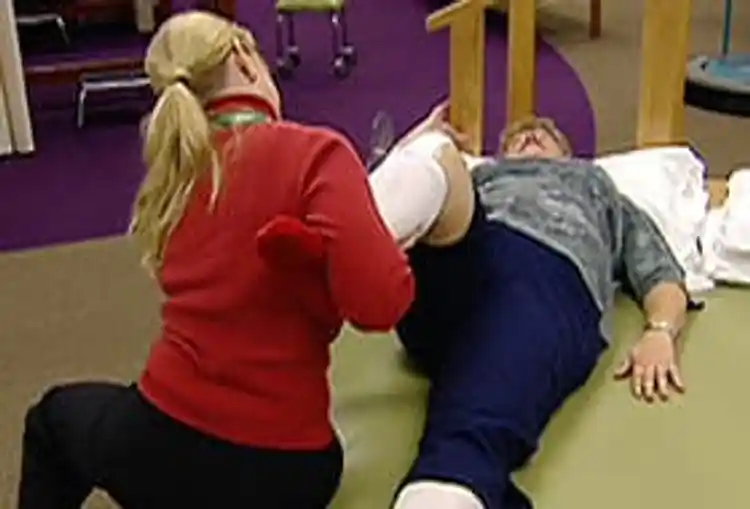Living with Osteoarthritis

Hide Video Transcript
Video Transcript
Narrator
Bad knees—we all know someone who has 'em. The acute pain often the result of Osteoarthritis, or degenerative arthritis as it's sometimes called—the most common type of arthritis. The disorder can affect the hands, hips, or spine, but it strikes the knees, the body's primary weight-bearing joints, most frequently. In the U.S. alone, over 20 million people have osteoarthritis. And that number is rapidly growing as baby boomers hit their senior years and trends in obesity continue to climb. Stan Dysart, MD
obesity by definition increases the load on the joint. Narrator
Doctor Stan Dysart, an orthopedic surgeon, knows all about Osteoarthritis. Stan Dysart, MD
You have erosion Narrator
Osteoarthritis is the wearing down of cartilage, the smooth substance found on the ends of bones. In severe cases, joints are left with none of their cushioning mechanisms. Though it most often afflicts people over 60, it can also strike earlier in life. That was the case with George Pisciotta—the trait runs in his family. George Pisciotta
I had been on anti-inflammatories for about eight years. Narrator
Like many with osteoarthritis, George looked into many different treatments to relieve his throbbing knees, including a regimen of hyaluronic acid—a treatment that involves injecting a viscous fluid directly into the joint area. George Pisciotta
It did eleviate some of the bone on bone pressure that I had Narrator
Hyaluronic acids are widely used as an interim therapy before knee-replacement surgery becomes necessary. Stan Dysart, MD
While they are not known to alter the course of arthritis, they do decrease the pain and swelling in most individuals. Narrator
Cortisone is another common treatment. Stan Dysart, MD
When you inject cortisone in the knee, it decreases swelling, it decreases pain—but it's temporary. Narrator
And there can be serious side-effects. Stan Dysart, MD
Cortisone itself can actually damage the cartilage cap if you inject it too frequently. Narrator
For patients like George this is the end game—knee-replacement surgery. George Pisciotta
It appears that if I don't abuse them, which I'm not going to run or jump, that I should be okay and be able to do normal activities. Narrator
Of course an even better goal might be to eliminate the need for surgery altogether. Toward that end, there are some very low-tech things you can do to make your body more resilient to the ravages of the disease: Stan Dysart, MD
I would say watch your diet, let's have an ideal body weight, exercise three or four times a week, and strengthen the muscles around the knee-joint. Narrator
If you're already showing signs of osteoarthritis, make those exercises of the low-impact variety. For WebMD, I'm Damon Meharg. 